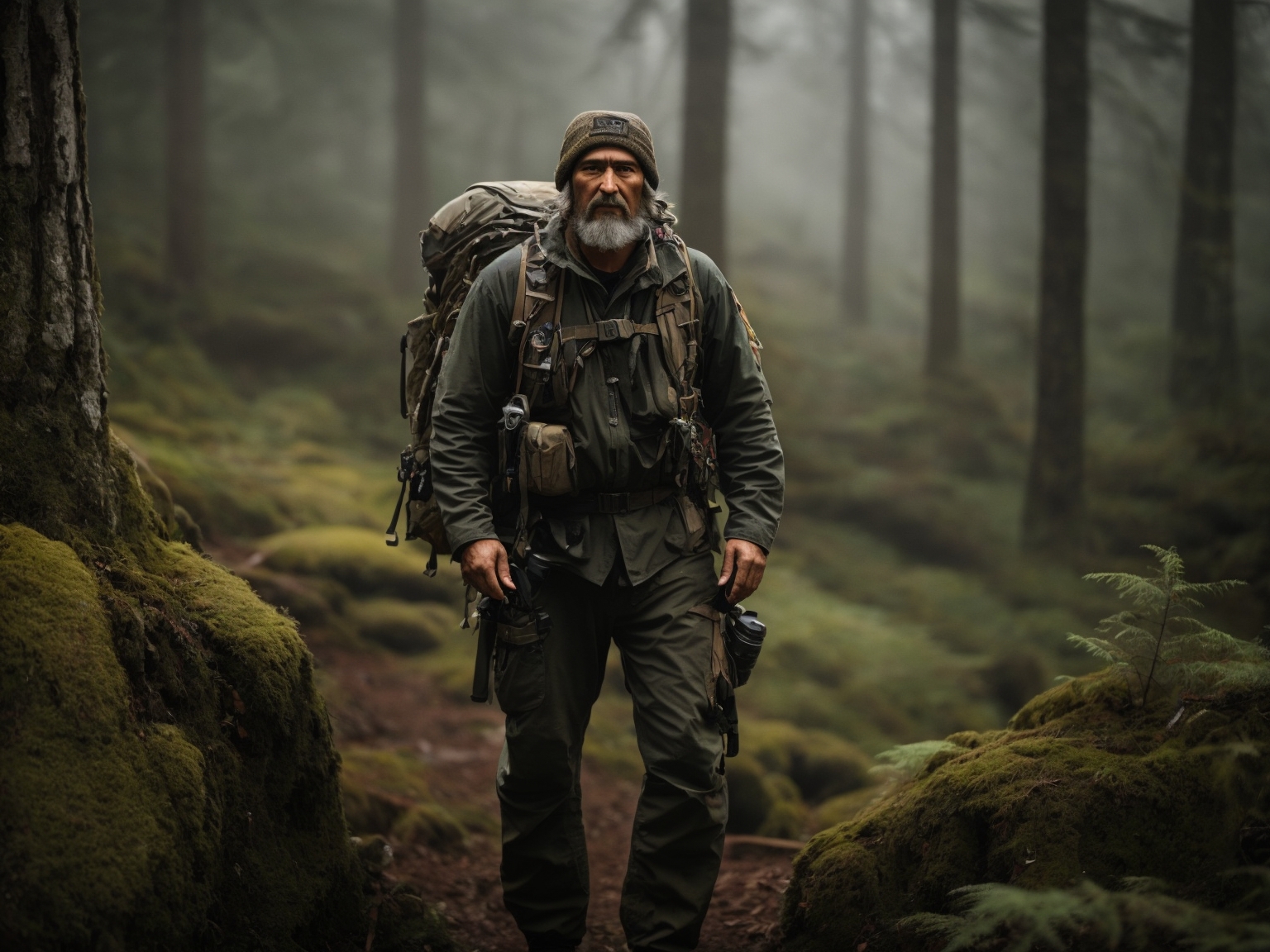
Finding shelter
Understanding the importance of shelter
When it comes to survival, finding shelter is one of the most important things you can do. A shelter provides protection from the elements and helps regulate body temperature, keeping you warm or cool as needed. It also offers a sense of security and can provide a safe space to rest and recharge. Understanding the importance of shelter can greatly increase your chances of survival in any situation.Identifying suitable shelter locations
To find a suitable shelter location, look for areas that offer natural protection, such as caves, rock formations, or thick foliage. Avoid low-lying areas that can flood, and be wary of potential hazards like falling trees or unstable terrain. Consider the direction of the wind and position your shelter accordingly to minimize exposure. Look for dry ground or create a raised bed if necessary to avoid moisture.
Building a makeshift shelter
If you don’t have access to natural shelter options, learning how to build a makeshift shelter is crucial. Look for materials such as branches, leaves, and debris to create a basic lean-to shelter or a debris hut. These types of shelters provide protection from wind, rain, and snow. Use the natural landscape to your advantage and ensure your shelter is sturdy and well-insulated.Using natural features as shelter
In a survival situation, using natural features as shelter can save you time and energy. Look for caves, overhangs, or large trees that can provide protection. Pay attention to the landscape and seek out areas with natural insulation, such as thick bushes or dense foliage. Utilize these natural features to create a temporary shelter and maximize your chances of staying safe and comfortable in the wild.Food and water sources
Finding and purifying water
When it comes to survival, finding a reliable source of water is essential. Look for streams, rivers, or lakes, but be cautious of stagnant or contaminated water. If necessary, collect rainwater or melt snow for a source of hydration. To purify water, boil it for at least one minute or use water purification tablets. Additionally, consider building a solar still or using a DIY water filter to remove impurities.
Identifying edible plants
Being able to identify edible plants can greatly improve your chances of finding food in the wild. Familiarize yourself with common edible plants in your area, such as berries, nuts, and wild greens. Learn to identify these plants correctly to avoid consuming anything poisonous. It’s also important to know how to prepare and cook wild plants to make them more digestible.Basic hunting and trapping techniques
If you find yourself in a situation where you need to hunt for food, basic hunting and trapping techniques can be invaluable. Learn how to construct simple traps, such as snares or deadfall traps, to catch small game. Research the local wildlife and their behavior to increase your chances of success. Remember to always prioritize safety and respect wildlife during hunting or trapping activities.Fishing in survival situations
Fishing can be a reliable source of food in survival situations, especially near bodies of water. Learn different fishing techniques, such as handline fishing, fishing with improvised hooks, or using traditional fishing gear if available. Familiarize yourself with local fish species and their habits to optimize your chances of catching fish. Keep in mind any legal restrictions or protected areas when fishing.
Fire-making skills
Understanding the significance of fire
Fire provides numerous benefits in a survival situation. It provides warmth, light, and psychological comfort. It also helps purify water, cook food, and provide a means of signaling for rescue. Understanding the significance of fire is crucial for survival.Gathering firewood and tinder
To start a fire, gather firewood in various sizes, from small twigs to larger logs. Look for dead, dry wood to ensure it ignites more easily. Also, collect tinder such as dry leaves, grass, or bark that can help ignite the fire. Create a supply of firewood and tinder near your shelter to ensure you have a steady source of fuel.
Using different fire-starting methods
There are various methods to start a fire, such as using matches, lighters, flint and steel, or friction-based techniques like a bow drill or hand drill. Familiarize yourself with these different fire-starting methods and practice them before an actual survival situation. It’s important to have multiple methods as backups in case one fails.Maintaining and extinguishing a fire
Once you have a fire going, it’s important to know how to maintain it. Add small amounts of fuel gradually to keep the fire burning without overwhelming it. Ensure you have easy access to additional firewood to maintain it throughout the night. When it’s time to extinguish the fire, drown it with water and stir it until the ashes are cool to the touch.Navigation techniques
Reading and using a compass
A compass is a crucial navigation tool that can help you find your way in the wild. Learn how to read a compass and understand the different directional markings. Practice using a compass to navigate in various terrains and conditions. Remember to account for declination, which is the difference between true north and magnetic north in your area.Navigating with natural landmarks
In the absence of a compass, navigating with natural landmarks can be a useful alternative. Look for prominent features such as mountains, rivers, or unique rock formations that can act as reference points. Keep track of your position in relation to these landmarks and use them to guide your way.Creating and using makeshift navigation tools
If you don’t have a compass or cannot rely on natural landmarks, you can create makeshift navigation tools. For example, you can fashion a simple sundial using a stick and the sun’s shadow to determine direction. You can also use the stars at night or even observe the growth patterns of moss on trees to indicate north. Improvising navigation tools can help you maintain your orientation and find your way.
First aid basics
Assembling a basic first aid kit
Having a well-stocked first aid kit is essential in any survival situation. Your kit should include items such as bandages, antiseptic ointments, pain relievers, tweezers, and any personal medications you may need. Additionally, consider including items like a emergency blanket, medical tape, and scissors. Customize your kit according to your needs and the environment you are in.Treating common injuries
Knowing how to treat common injuries is crucial for survival. Learn basic first aid techniques such as cleaning and dressing wounds, immobilizing fractures, and applying proper pressure to control bleeding. Understand how to recognize signs of infection and treat them appropriately. In a survival setting, preventing further injury and infection is key to your overall well-being.Identifying and managing emergency situations
In emergency situations, quick thinking and action can be lifesaving. Learn how to identify and manage common emergency situations such as choking, drowning, severe bleeding, or heart attacks. Perform CPR and rescue breaths if necessary. Being able to remain calm and apply appropriate emergency procedures can significantly increase the chances of survival for both yourself and others.Survival mindset
Understanding the psychological aspect of survival
The psychological aspect of survival should not be underestimated. It is critical to maintain a positive mindset, as it directly impacts decision-making, problem-solving, and overall resilience. Understand that survival situations can be mentally challenging, and anticipate potential stressors. Develop coping mechanisms, such as practicing mindfulness, deep breathing exercises, or engaging in positive self-talk, to help maintain a strong mental state.Building resilience and maintaining a positive mindset
Building resilience is crucial during a survival situation. Cultivate mental toughness by focusing on small accomplishments, staying optimistic, and embracing a proactive attitude. Accept setbacks as learning opportunities and keep a positive outlook on the situation. Surround yourself with supportive individuals if possible and rely on teamwork to boost morale and maintain motivation.
Developing adaptive problem-solving skills
In survival situations, problems and obstacles are inevitable. Developing adaptive problem-solving skills can help you overcome challenges effectively. Break down problems into smaller, manageable tasks, and think critically to identify potential solutions. Embrace creativity and resourcefulness by utilizing available materials or tools in unconventional ways. Developing these problem-solving skills will enhance your ability to adapt to changing circumstances and increase your chances of survival.Emergency signaling
Using visual signals for rescue
In a survival situation, visual signals can greatly increase your chances of being noticed by potential rescuers. Use items like bright-colored clothing or equipment to attract attention. Create large, visible signals such as SOS spelled out with rocks, logs, or debris. Utilize reflective surfaces such as mirrors or CDs to reflect sunlight. Ensure that your signals are positioned in open areas and are clearly visible from a distance.Creating audible distress signals
Audible signals can also be effective in attracting attention. Use a whistle or shout at regular intervals to maximize your chances of being heard. Create loud noises by banging rocks together or using a signaling device like a whistle. If you’re near a water body, use a splash or loud noise to create attention-catching sounds. Remember to conserve energy, choose strategic times for signaling, and listen for potential rescuers.Utilizing basic signaling devices
Having basic signaling devices can greatly enhance your ability to communicate in a survival situation. Include items like a whistle, signaling mirror, or brightly colored cloth in your survival kit. These devices are lightweight, compact, and highly effective for catching the attention of potential rescuers. Practice using these devices beforehand to ensure familiarity and optimal usage when needed.Gear and equipment essentials
Choosing the right gear for survival
Selecting the right gear for survival is crucial. Consider factors such as the environment, climate, and potential hazards you may encounter. Some essential items to consider include a durable backpack, a reliable knife, a shelter system (tarps, tents), proper clothing for layering, a sturdy flashlight, and a water filtration system. Invest in high-quality gear that is lightweight, durable, and designed for outdoor use.Essential items for a survival kit
A well-prepared survival kit is essential in any outdoor adventure. Some essential items to include are a first aid kit, fire-starting tools (lighter, matches), a compass, a multi-tool, a signaling device (whistle, mirror), and a water container. Add personal items like extra clothing, emergency blankets, and food rations. Customize your survival kit to suit your needs and the duration of your adventure.
Using multi-purpose tools
Utilizing multi-purpose tools can significantly lighten your load and streamline your survival experience. Look for tools that serve multiple functions, such as a multi-tool with a knife, can opener, screwdriver, and more. Paracord is another versatile item that can be used for various tasks like building shelter, repairing gear, or creating snares. Maximize the use of each item in your kit to save space and weight.Caring for and maintaining equipment
Regularly caring for and maintaining your equipment is essential for its longevity and reliability. Clean and dry gear after each use to prevent rust or mold growth. Inspect items for wear and tear, and repair or replace as necessary. Keep your gear organized and easily accessible to ensure efficiency in a survival situation. Regularly check and replenish your supplies and replace expired items.Weather awareness
Understanding the impact of weather on survival
Weather can greatly impact your chances of survival in outdoor settings. Extreme heat or cold, rain, wind, or snow can pose significant risks. Understand how weather conditions can affect your body’s response and plan accordingly. Take steps to prevent hypothermia or heatstroke and always be prepared for changing weather conditions.Reading and interpreting weather forecasts
Learning to read and interpret weather forecasts can be invaluable in planning your activities and staying safe. Familiarize yourself with weather terminology and understand the implications of different weather patterns. Pay attention to forecasts for precipitation, temperature changes, wind speed and direction, and any severe weather warnings. Consider obtaining a weather radio or using reliable weather apps to stay informed.Preparing for extreme weather conditions
In the face of extreme weather conditions, preparation is key. Monitor weather forecasts regularly and plan activities accordingly. Dress in appropriate layers to protect against cold or heat, and use sunscreen or protective clothing to shield against UV radiation. In case of severe weather warnings, seek shelter and follow recommended safety protocols. Always prioritize safety and be prepared to alter your plans to ensure your well-being.
Are the Best Survival Tips Suitable for Beginners?
When it comes to survival, beginners might wonder if the best survival tips are suitable for them. While the best survival tips are generally aimed at all skill levels, beginners can certainly benefit from them. Acquiring knowledge on essential skills, such as navigation or basic first aid, can save lives in various situations. Therefore, beginners should not shy away from implementing the best survival tips into their preparations.
Rescue and communication
Developing a rescue plan
In any survival situation, it’s important to have a rescue plan in place. Share your itinerary and expected return time with a reliable person who can initiate a search if you don’t return as planned. Familiarize yourself with emergency contact numbers and communication channels. Ensure your rescue plan includes alternative routes, checkpoints, and contingency measures that can aid rescuers in locating you.Effective communication methods in emergency situations
During a survival situation, communication is vital for obtaining help and staying connected with the outside world. Carry a fully charged mobile phone, but be aware that reception may be limited in remote areas. Utilize available communication devices such as radios, satellite phones, or personal locator beacons if possible. Learn and use common distress signals to communicate your need for help.Using available resources for communication
If you find yourself without modern communication devices, there are still ways to signal for help. Utilize smoke signals during the day by creating a smoky fire to draw attention. Use reflective surfaces like mirrors, CDs, or even a polished metal object to flash sunlight and attract attention from afar. Make noise by yelling, banging rocks together, or using any available means to notify potential rescuers of your presence. By familiarizing yourself with these survival skills and adopting a prepared and adaptable mindset, you greatly increase your chances of surviving in the wild. Remember, practice makes perfect, so take the time to learn and hone these skills before you find yourself in a survival situation. Stay safe, stay positive, and stay prepared. You’ve got this!
I’m Alex, the author behind True Survivalist. As a survival enthusiast myself, I’ve created this website to serve as a valuable resource for fellow survivalists and preppers. Whether it’s understanding survival situations, emergency preparedness, or finding the right survival gear, I’ve got you covered. Through a series of informative guides, I aim to provide answers to commonly asked questions, debunk common myths, and help you avoid common mistakes. At True Survivalist, I believe in equipping you with the knowledge and tools you need to be prepared for any survival scenario. Join me on this journey of self-reliance and resilience.
